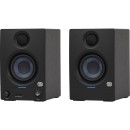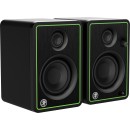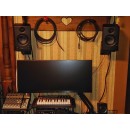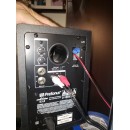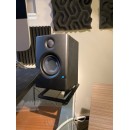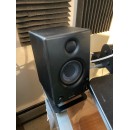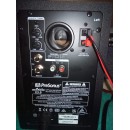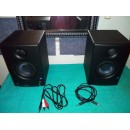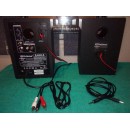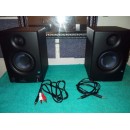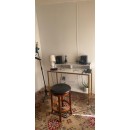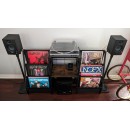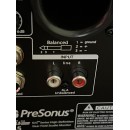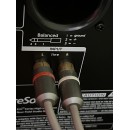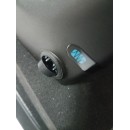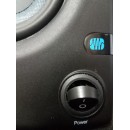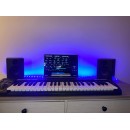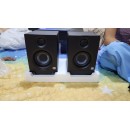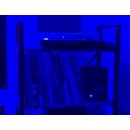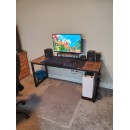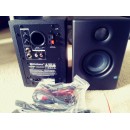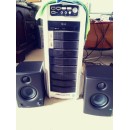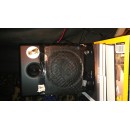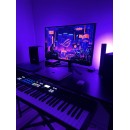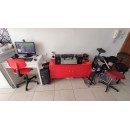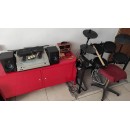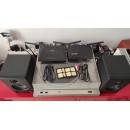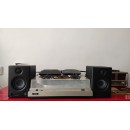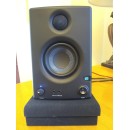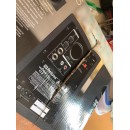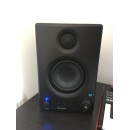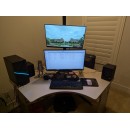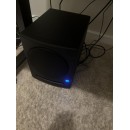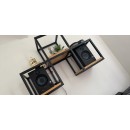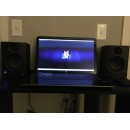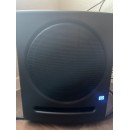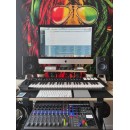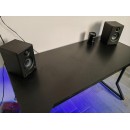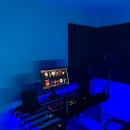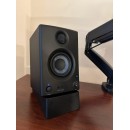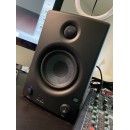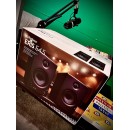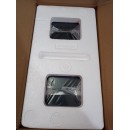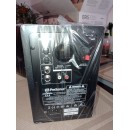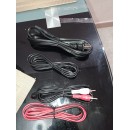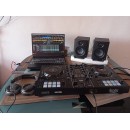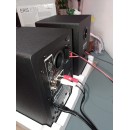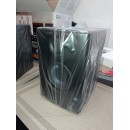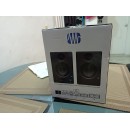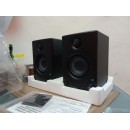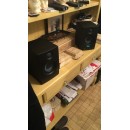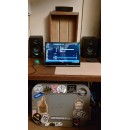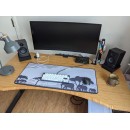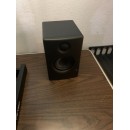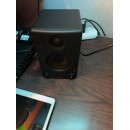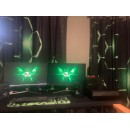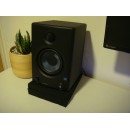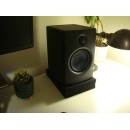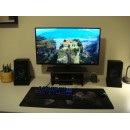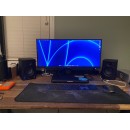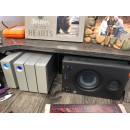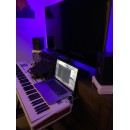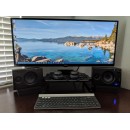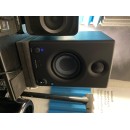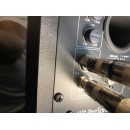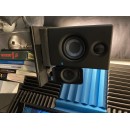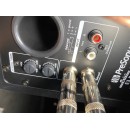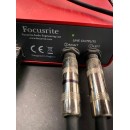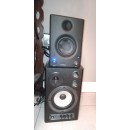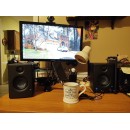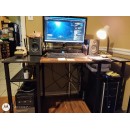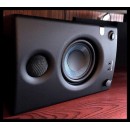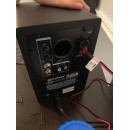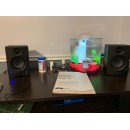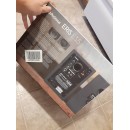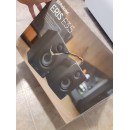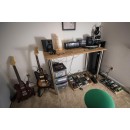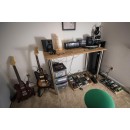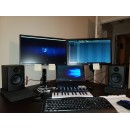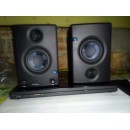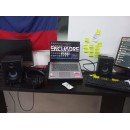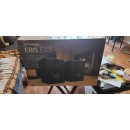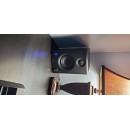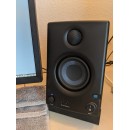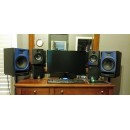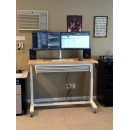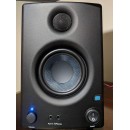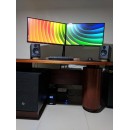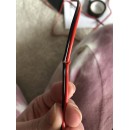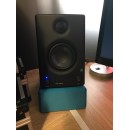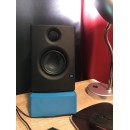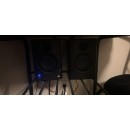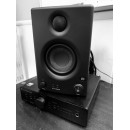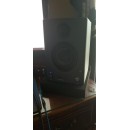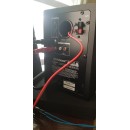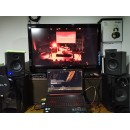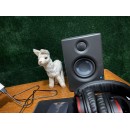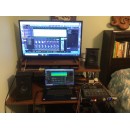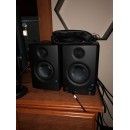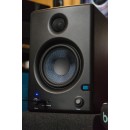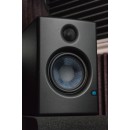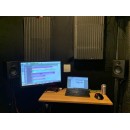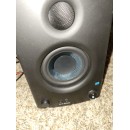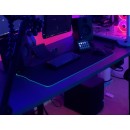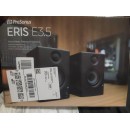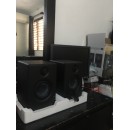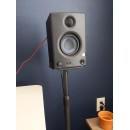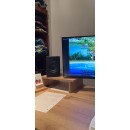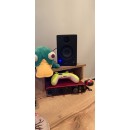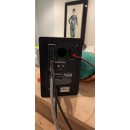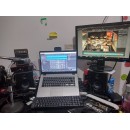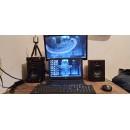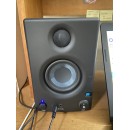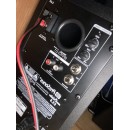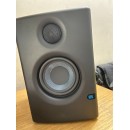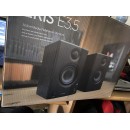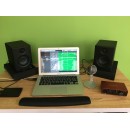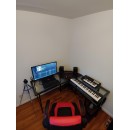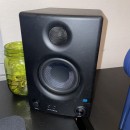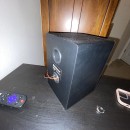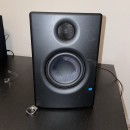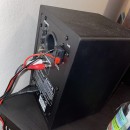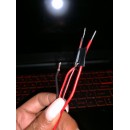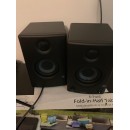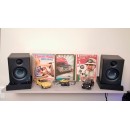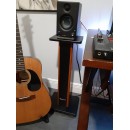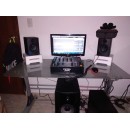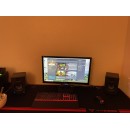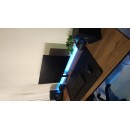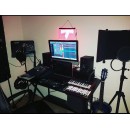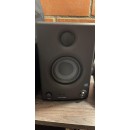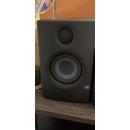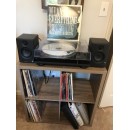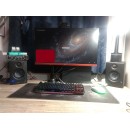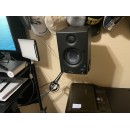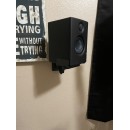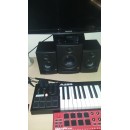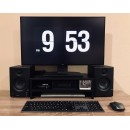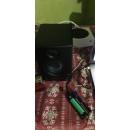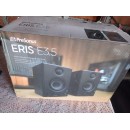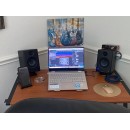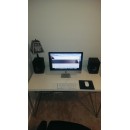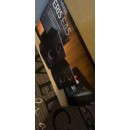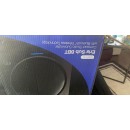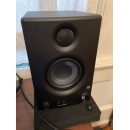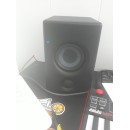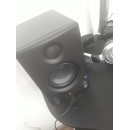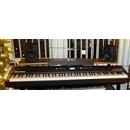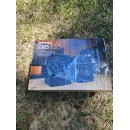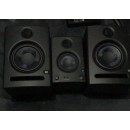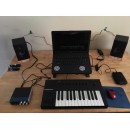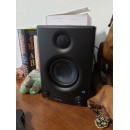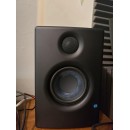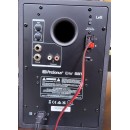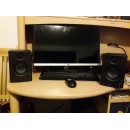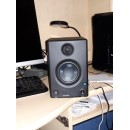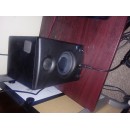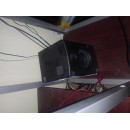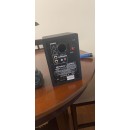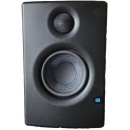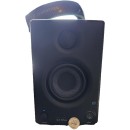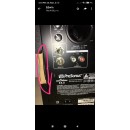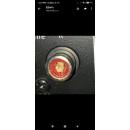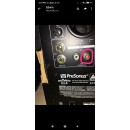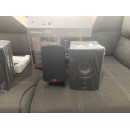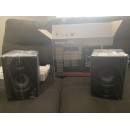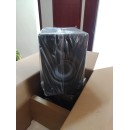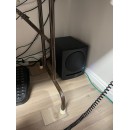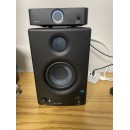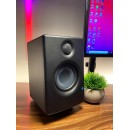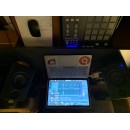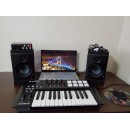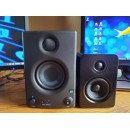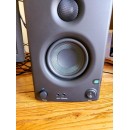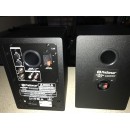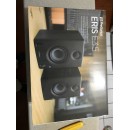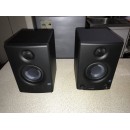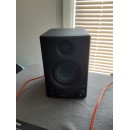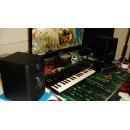Mackie CR3-X vs PreSonus ERIS 3.5: A Detailed Comparison
The Mackie CR3-X Studio Monitor Speaker and the PreSonus ERIS 3.5 Studio Monitor Speaker are both popular choices for those seeking quality audio in a compact form. The Mackie CR3-X features a sleek design with a brushed metal panel and distinct contours that add a modern aesthetic to any studio or desktop setup. It comes equipped with a 3-inch polypropylene-coated woofer and a 0.75-inch ferrofluid-cooled silk-dome tweeter, which together deliver a balanced sound across a wide frequency range. The CR3-X is also known for its user-friendly interface, featuring a convenient front-panel volume knob and a headphone output for easy accessibility.
In contrast, the PreSonus ERIS 3.5 offers a slightly different set of features that cater to those who prioritize precise audio adjustments. It includes a 3.5-inch woven composite driver and a 1-inch silk-dome tweeter, designed to produce clearer sound with minimal distortion. One of its standout features is the inclusion of acoustic tuning controls, allowing users to adjust the high and low frequencies to better suit their listening environment. This makes the ERIS 3.5 an attractive option for those who need more control over their audio output.
Both speakers provide versatile connectivity options. The Mackie CR3-X includes 1/4-inch, RCA, and 1/8-inch inputs, making it easy to connect with a variety of devices. Similarly, the PreSonus ERIS 3.5 offers TRS and RCA inputs, with the added advantage of a front-panel auxiliary input for quick connections. While both models are compact, the Mackie CR3-X is slightly smaller, making it a more portable option for those with limited space.
Overall, the choice between the Mackie CR3-X and the PreSonus ERIS 3.5 largely depends on individual needs. If you are looking for a sleek design with straightforward controls, the Mackie CR3-X might be the better option. However, if acoustic customization and precision are your priorities, the PreSonus ERIS 3.5 could be the ideal choice. Both speakers offer excellent value and sound quality, making them worthy considerations for any audio enthusiast or professional.
In this section, we will delve into the specifications, advantages, and disadvantages of the Mackie CR3-X and PreSonus ERIS 3.5 studio monitor speakers. Our detailed analysis will provide you with all the necessary information to make an informed decision about which speaker best meets your needs. We aim to thoroughly examine each product's features, ensuring you have a clear understanding of their respective strengths and potential drawbacks.
Specification Breakdown and Feature Analysis
| User Rating Based on Analysis of Reviews | |
|---|---|
|
Show More |
| Pros: | |
|---|---|
|
|
| Cons: | |
|---|---|
|
|
| Find Best Price | Find Best Price |
| Key Specs | |
|---|---|
| Monitor Type & Configuration | |
| Active 2-Way | Active 2-Way |
| Total Power Output | |
| 25 W RMS per Monitor | 25 W per Monitor |
| Tweeter | |
| 1x 1" / 25.4 mm Silk Dome | 1x 0.75" / 19.1 mm Silk Dome |
| Woofer | |
| 1x 3.5" / 11.4 cm Cone |
1x 3" / 7.62 cm Polypropylene Cone |
| Frequency Range | |
| 80 Hz to 20 kHz |
70 Hz to 20 kHz (-10 dB) 80 Hz to 20 kHz (-3 dB) |
| Audio I/O | |
| 2x 1/4" TRS Balanced Input 1x Stereo 2RCA Unbalanced Input 1x 1/8" / 3.5 mm TRS Unbalanced Input 2x Binding Post Pair Output 1x 1/8" / 3.5 mm TRS Headphone Output |
2x 1/4" TRS Balanced/Unbalanced Input 1x Stereo 2RCA Unbalanced Input 1x 1/8" / 3.5 mm TRS Unbalanced Aux Input 2x Push Terminal Unbalanced Output 1x 1/8" / 3.5 mm TRS Unbalanced Headphone Output |
| Digital Audio I/O | |
| Network I/O | |
| Wireless | |
The Mackie CR3-X and PreSonus ERIS 3.5 are both active 2-way studio monitor speakers designed for home studios and multimedia applications. Each speaker has a total power output of 25 W per monitor, ensuring a decent sound level for personal use. However, the Mackie utilizes a 0.75" silk dome tweeter paired with a 3" polypropylene cone woofer, while the PreSonus features a 1" silk dome tweeter and a slightly larger 3.5" cone woofer. This difference in driver size may influence the overall sound reproduction with the PreSonus potentially delivering a bit more low-end response.Show More
In terms of frequency response, the Mackie CR3-X offers a range from 70 Hz to 20 kHz (-10 dB) and 80 Hz to 20 kHz (-3 dB), whereas the PreSonus ERIS 3.5 has a frequency range starting at 80 Hz and extending to 20 kHz. This gives the Mackie a slight edge in lower frequency performance, which may be preferable for bass-heavy applications. Both speakers have similar audio input options, including 2x 1/4" TRS balanced inputs, a stereo 2RCA unbalanced input, and a 1/8" (3.5 mm) unbalanced input. However, the Mackie offers an additional push terminal unbalanced output, while the PreSonus features binding post pair outputs.
Both models lack digital audio I/O, network capabilities, and wireless functionality, making them straightforward choices for users looking for simple connectivity. They also both include a 1/8" (3.5 mm) TRS headphone output for private listening. Overall, the choice between the Mackie CR3-X and PreSonus ERIS 3.5 will depend on specific audio preferences, with the Mackie appealing to those who prioritize lower frequency performance, while the PreSonus may attract users looking for a slightly larger woofer and a balanced sound profile.
| General | |
|---|---|
| Number of Included Monitors | |
| Stereo Pair | Stereo Pair |
| Enclosure | |
| Bass-Reflex/Ported | Bass-Reflex/Ported |
| Total Power Output | |
| 25 W RMS per Monitor | 25 W per Monitor |
The Mackie CR3-X Studio Monitor Speaker and the PreSonus ERIS 3.5 Studio Monitor Speaker both come as a stereo pair, making them ideal for creating a balanced audio environment. Each monitor is designed to deliver a stereo sound experience that is essential for mixing and monitoring audio accurately. This feature is crucial for both casual music enthusiasts and professional audio engineers looking for reliable playback.Show More
Both models utilize a bass-reflex/ported enclosure, which enhances low-frequency response. This design allows for a more robust bass output, making it suitable for genres that require deep bass tones. Additionally, the ported design helps in reducing distortion, ensuring a cleaner sound overall, which is a significant advantage for those who prioritize sound quality in their audio setups.
In terms of power, both the Mackie CR3-X and the PreSonus ERIS 3.5 deliver a total power output of 25 W per monitor. This power rating is sufficient for small to medium-sized rooms and provides enough headroom for clear and dynamic sound reproduction. The consistency in power output between these two models ensures that users can expect comparable performance levels when it comes to volume and audio clarity.
| Drivers per Monitor | |
|---|---|
| Tweeter | |
| 1x 1" / 25.4 mm Silk Dome | 1x 0.75" / 19.1 mm Silk Dome |
| Woofer | |
| 1x 3.5" / 11.4 cm Cone |
1x 3" / 7.62 cm Polypropylene Cone |
| Amplifiers | |
| Full-Range: 2 x 25 W RMS Class-AB | Full-Range: 50 W Class-D |
The Mackie CR3-X Studio Monitor Speaker features a 0.75-inch silk dome tweeter and a 3-inch polypropylene cone woofer, providing a balanced sound profile suitable for various audio applications. With a 50 W Class-D amplifier, the CR3-X delivers powerful audio output, making it an excellent choice for both studio monitoring and casual listening. The compact design also complements small studio spaces while ensuring quality sound reproduction.Show More
In comparison, the PreSonus ERIS 3.5 Studio Monitor Speaker comes equipped with a 1-inch silk dome tweeter and a slightly larger 3.5-inch cone woofer. The ERIS 3.5 is powered by a 2 x 25 W RMS Class-AB amplifier, offering a total of 50 W output, similar to the Mackie model. This speaker is designed to provide clear and accurate sound, making it ideal for music production, mixing, and other audio tasks.
Overall, both speakers aim to deliver high-quality audio in a compact form factor. The Mackie CR3-X stands out with its Class-D amplification and polypropylene woofer, while the PreSonus ERIS 3.5 features a larger woofer and Class-AB amplification. Ultimately, the choice between these two studio monitors will depend on personal preferences in sound characteristics and design aesthetics.
| Performance | |
|---|---|
| Frequency Range | |
| 80 Hz to 20 kHz |
70 Hz to 20 kHz (-10 dB) 80 Hz to 20 kHz (-3 dB) |
| Maximum Sound Pressure Level (SPL) | |
| 97 dB | 97 dB |
The Mackie CR3-X Studio Monitor Speaker offers a frequency range of 70 Hz to 20 kHz (-10 dB) with a slightly narrower range of 80 Hz to 20 kHz (-3 dB). This allows for a versatile response suitable for various audio applications, making it a great choice for home studios and multimedia production. The maximum sound pressure level (SPL) reaches 97 dB, providing ample volume for detailed listening and mixing sessions.Show More
In comparison, the PreSonus ERIS 3.5 Studio Monitor Speaker has a frequency range starting at 80 Hz to 20 kHz, which is slightly higher than the Mackie's lower limit. It also boasts a maximum SPL of 97 dB, matching the Mackie in terms of loudness. However, the PreSonus model includes additional features such as Output Current Limiting, which provides protection against potential damage, ensuring longevity and reliability during use.
In summary, while both the Mackie CR3-X and PreSonus ERIS 3.5 share similar SPL levels, the Mackie has a lower frequency response, which may appeal to users looking for deeper bass representation. On the other hand, the PreSonus offers protective features that enhance its durability, making it a solid choice for those prioritizing longevity in their studio monitors. Ultimately, the choice between these two monitors will depend on the specific needs of the user regarding frequency response and added protective features.
| Signal Processing | |
|---|---|
| EQ | |
| 1x HF Shelf 1x LF Shelf |
|
| Phase Adjustment | |
The Mackie CR3-X Studio Monitor Speaker is designed with simplicity in mind, featuring a straightforward setup without the complexities of advanced equalization. It lacks built-in EQ and filters, which may appeal to those who prefer a more direct sound representation. The crossover frequency is set at 3 kHz, allowing for effective separation of bass and treble frequencies, but it does not provide any phase adjustment capabilities.Show More
In contrast, the PreSonus ERIS 3.5 Studio Monitor Speaker incorporates a more flexible sound shaping system. It features 1x HF Shelf and 1x LF Shelf EQ controls, enabling users to tailor the high and low frequencies to their liking. This added functionality can be particularly beneficial for mixing and monitoring, as it allows for adjustments that can accommodate different acoustic environments. However, like the Mackie model, it also does not offer phase adjustment.
When comparing the two, the decision may come down to personal preference and specific use cases. The Mackie CR3-X offers a no-frills approach that may be ideal for beginners or those seeking an uncolored sound, while the PreSonus ERIS 3.5 provides more versatility with its EQ options, catering to users who want to customize their audio experience.
| Connectivity | |
|---|---|
| Audio I/O | |
| 2x 1/4" TRS Balanced Input 1x Stereo 2RCA Unbalanced Input 1x 1/8" / 3.5 mm TRS Unbalanced Input 2x Binding Post Pair Output 1x 1/8" / 3.5 mm TRS Headphone Output |
2x 1/4" TRS Balanced/Unbalanced Input 1x Stereo 2RCA Unbalanced Input 1x 1/8" / 3.5 mm TRS Unbalanced Aux Input 2x Push Terminal Unbalanced Output 1x 1/8" / 3.5 mm TRS Unbalanced Headphone Output |
| Digital Audio I/O | |
| Network I/O | |
| USB | |
| Wireless | |
The Mackie CR3-X Studio Monitor Speaker and the PreSonus ERIS 3.5 Studio Monitor Speaker both offer a range of audio input and output options tailored for studio use. Each speaker features 2x 1/4" TRS Balanced/Unbalanced Inputs, making them suitable for connecting to various audio sources. Additionally, both models include 1x Stereo 2RCA Unbalanced Input and 1x 1/8" / 3.5 mm TRS Unbalanced Input, allowing for flexibility in connecting various devices.Show More
When it comes to headphone connectivity, both speakers are equipped with 1x 1/8" / 3.5 mm TRS Unbalanced Headphone Output, providing users with an easy way to monitor audio directly. The Mackie CR3-X also offers 2x Push Terminal Unbalanced Outputs, while the PreSonus ERIS 3.5 features 2x Binding Post Pair Outputs. This distinction may appeal to users depending on their preferred method of connecting additional speakers or devices.
Neither the Mackie CR3-X nor the PreSonus ERIS 3.5 includes Digital Audio I/O, Network I/O, USB, or Wireless capabilities, which positions both models strictly for analog use. Furthermore, neither speaker is Mobile App Compatible, indicating a focus on traditional audio interfaces rather than modern wireless or app-based controls. Overall, both studio monitors provide solid features tailored for audio professionals, but the choice may come down to personal preference regarding output connections and design.
| Physical | |
|---|---|
| Color | |
| Black | Black |
| Monitor Orientation | |
| Vertical | Vertical |
| Dimensions (W x H x D) | |
| 5.5 x 8.3 x 6" / 139.7 x 210.8 x 152.4 mm (Each) | 5.5 x 8.1 x 7.1" / 14 x 20.6 x 18 cm (Each) |
| Weight | |
| 3.1 lb / 1.4 kg (Pair) | 7.8 lb / 3.5 kg (Pair) |
The Mackie CR3-X Studio Monitor Speaker features a sleek black design and maintains a vertical monitor orientation. Constructed from MDF, it ensures durability and quality sound reproduction. Unlike some other models, it does not have a fan-cooling system and lacks mounting points, making it suitable for desktop use. The operating temperature range is from 32 to 104°F / 0 to 40°C, allowing for versatility in different environments. The dimensions of each speaker are 5.5 x 8.1 x 7.1 inches (or 14 x 20.6 x 18 cm), and the total weight for the pair is approximately 7.8 lb / 3.5 kg.Show More
In comparison, the PreSonus ERIS 3.5 Studio Monitor Speaker also features a black finish and a vertical orientation. Slightly larger in height, its dimensions are 5.5 x 8.3 x 6 inches (or 139.7 x 210.8 x 152.4 mm), but it is notably lighter, with a total weight of only 3.1 lb / 1.4 kg for the pair. Similar to the Mackie model, it is built with a focus on studio performance without fan cooling and lacks mounting options, making it ideal for personal studio setups.
Both speakers cater to the needs of home studio users, with the Mackie CR3-X being heavier and slightly larger, while the PreSonus ERIS 3.5 is more lightweight and compact. Each monitor provides reliable sound quality, but the choice between them may depend on the specific space constraints and weight preferences of the user.
| Packaging Info | |
|---|---|
| Package Weight | |
| 8.785 lb | 9.3 lb |
| Box Dimensions (LxWxH) | |
| 15.4 x 11.5 x 8.9" | 15.6 x 10.3 x 8" |
The Mackie CR3-X Studio Monitor Speaker and the PreSonus ERIS 3.5 Studio Monitor Speaker are both compact and efficient options for studio monitoring, appealing to both beginners and seasoned audio professionals. In terms of package weight, the Mackie CR3-X weighs approximately 9.3 lb, making it slightly heavier than the PreSonus ERIS 3.5, which has a package weight of 8.785 lb. This difference in weight may influence portability and setup ease for users who frequently move their monitors.Show More
When comparing the box dimensions, the Mackie CR3-X measures 15.6 x 10.3 x 8", while the PreSonus ERIS 3.5 has dimensions of 15.4 x 11.5 x 8.9". The Mackie model is slightly longer and narrower, which could impact how they fit into different studio setups or shelving units. The PreSonus model, being a bit taller and wider, may offer a different aesthetic and spatial arrangement in a workspace.
Overall, both studio monitors provide valuable features suitable for various audio applications. The Mackie CR3-X offers a slight edge in weight, while the PreSonus ERIS 3.5 boasts a different dimension profile, catering to specific user preferences and studio environments.
| Customer Images | |
|---|---|
| Videos | |
|---|---|
|
|
|
